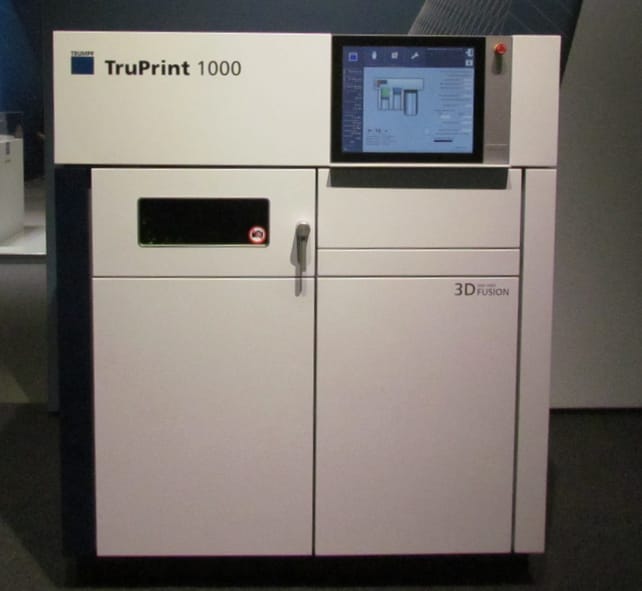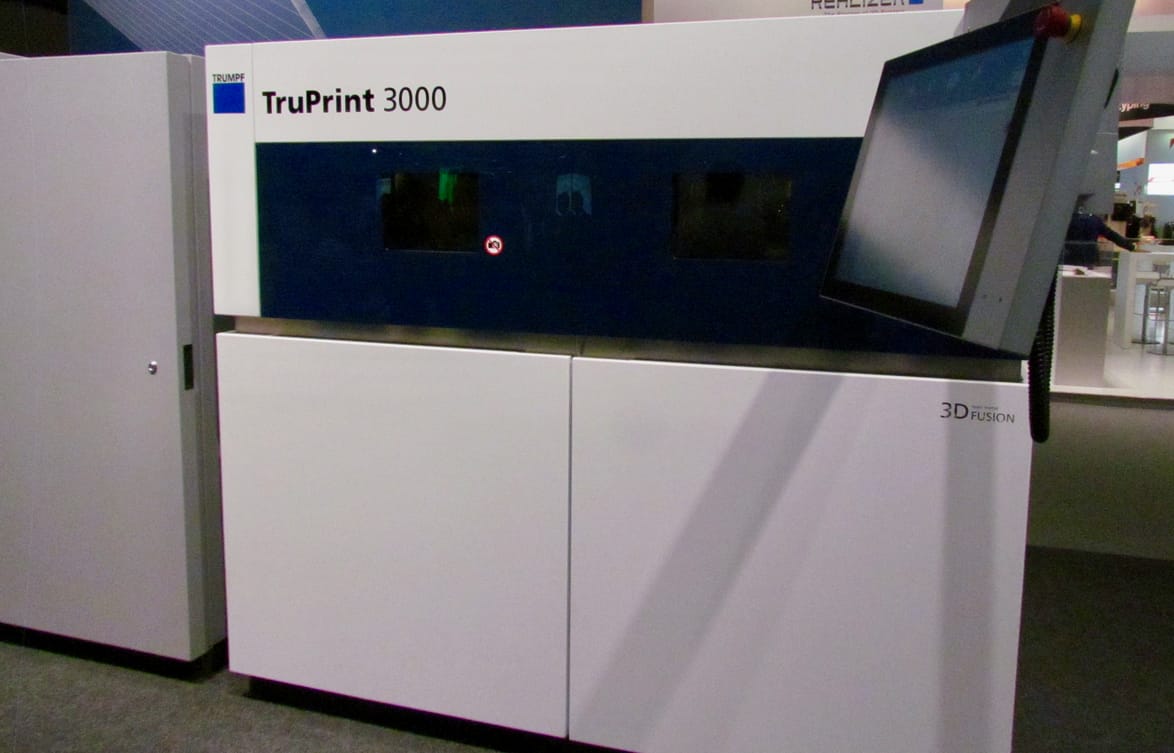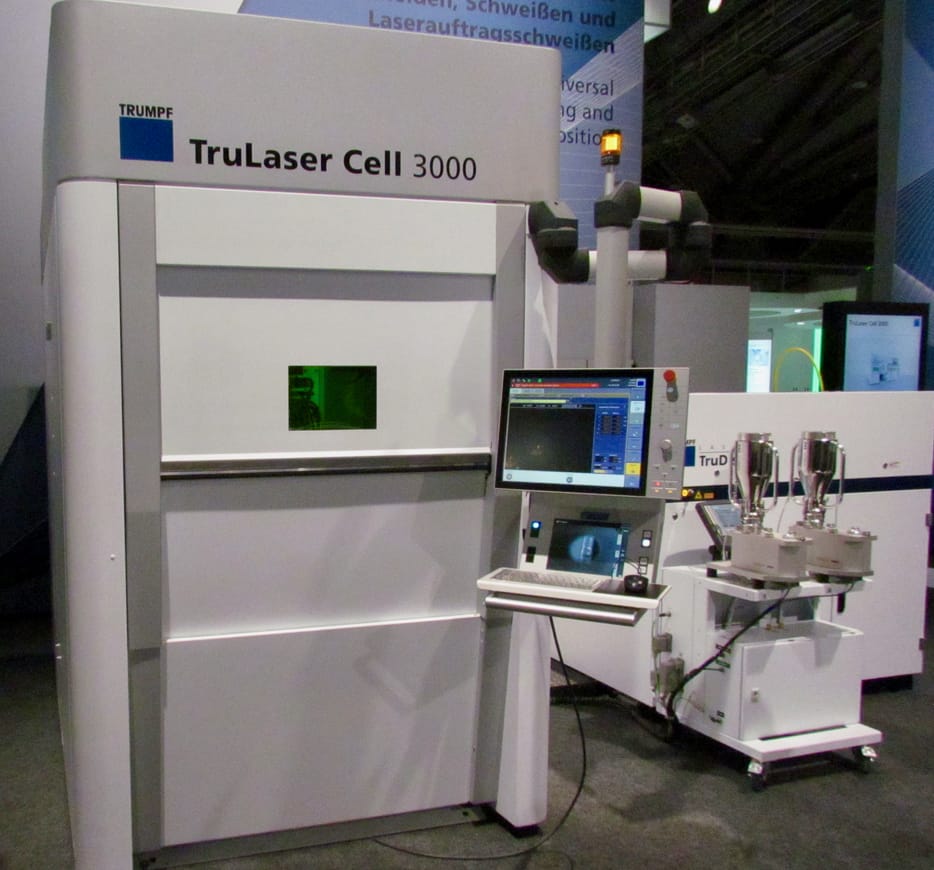
There aren’t that many large-scale manufacturers of commercial 3D metal printers, but Germany-based Trumpf is one of them.
Like several other entrants into the 3D metal printer market, Trumpf actually has a storied history reaching back to 1923, when they were originally founded near Stuttgart as a machine workshop specializing in sheet metal equipment. Over the years, the company grew and began marketing a wide variety of machine tools. Today the company’s product line spans machine tools, power tools, laser technology and electronics. And they’re not small by any means: in 2016 they received almost €3B in revenue with around 11,000 employees worldwide.
As a pioneer in the field of lasers, it was natural they considered entering the 3D metal printing market, and apparently they first did in 2000, almost twenty years ago. But, we were told, they felt the market was too early so they withdrew for a time. More recently, they say their own customers have asked them to re-enter the market, which they did a few years ago.
Their decades of experience designing and marketing machine tools and lasers put them in an excellent position to develop 3D metal printers. Today they market a line of equipment that uses not one, but TWO different 3D metal printing processes.

One technology should be reasonably familiar: a laser-powder process similar to that used in several competing machines. In this process a flat bed of fine metal powder is selectively sintered by a powerful laser – or in some cases, several lasers in certain Trumpf models. Repeated layers of powder and sintering result in solid metal objects.
This technology is used in their TruPrint 1000 and 3000 machines.
Their other process is laser deposition. It’s quite a different process, but has evolved from their existing laser expertise. The idea here is that they have an enclosed system equipped with a powerful laser mounted on a five-axis CNC platform. The laser is able to move freely to operate on an object.

The TruLaser Cell 3000 and 7000 series are thus able to perform sophisticated laser welding and laser cutting, but also can 3D print. The machines are designed to deposit coatings at high speed, but this is simply another form of 3D printing. They explain how this works:
With laser metal fusion, the laser creates new workpieces from powder, layer by layer. This has been highly advantageous so far in the production of prototypes, one-offs and small series. In laser metal deposition, the laser creates a melt pool on the component surface into which a metallic filler material in powder form is continuously introduced and melted. The welded-together beads that result from this can form structures on existing bases or on entire components. The method can also be used for coating and repair.
You might think that the deposition technique is at a disadvantage because the CNC may be restricted in which geometries it can address. However, that’s not the case here because the print can also be built layer by layer and thus all geometries should be possible.
All equipment encloses the build volume with inert gas for safety purposes.
Depending on what you need to accomplish, either or both of these two different 3D metal printing processes may be required.
Build volume is the key difference between the Trumpf models. The TruCell 1000 can build within a 100 x 100mm cylinder, while the 7000 series’ two models have either a 2000 x 1500 x 750mm or 4000 x 1500 x 750mm build volume.
Meanwhile, the TruPrint 1000 offers a 100 x 100mm cylindrical build volume, and its larger sibling, the 3000, offers a 300 x 400mm build cylinder.
I’m also told the company is working on a “5000” model that could include three 500W lasers, creating a very powerful and fast printing machine.
But one of the key differences between Trumpf’s offerings and those of most of their competitors is that as a machine tool provider, they can also deliver to you all the associated equipment required to successfully operate the 3D printers. They claim they have a “whole process chain for additive manufacturing”, including most notably an unpacking / cleaning station for completed prints.
The also offer significant consultation services for companies wishing to explore 3D metal printing but who need advice. I also understand Trumpf is working with Siemens to better integrate their equipment with factory and industrial software used by many operations.
Via Trumpf

